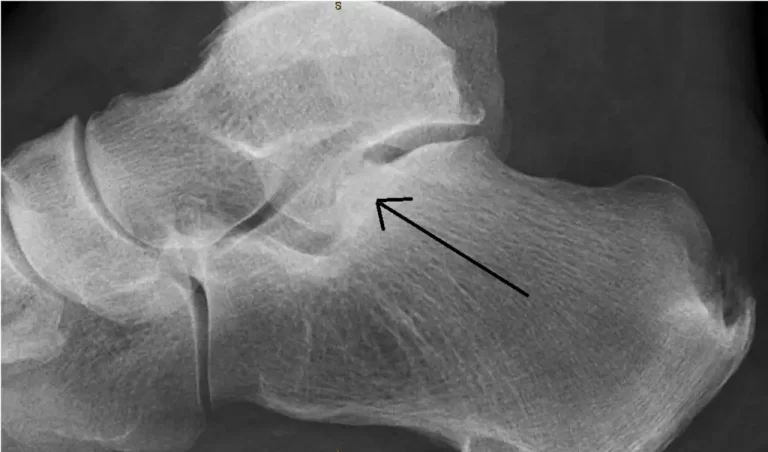Triangular Interval Syndrome
Table of Contents
What is Triangular Interval Syndrome?
The triangular interval (also known as the lateral triangular space, lower triangular space, & triceps hiatus) is a gap found in the axilla. It is one of the three intermuscular spaces formed in the axillary space. The other two spaces are quadrilateral space & triangular space.
Triangular Interval Syndrome (TIS) was explained as a differential diagnosis for radicular pain in the upper extremity. It is a disease where the radial nerve is entrapped in the triangular interval outcoming in upper extremity radicular pain. The radial nerve & profunda brachii pass through the triangular interval & are hence vulnerable.
What is the anatomy of Triangular Interval Syndrome?
Borders
Two of its borders are as follows:
- teres major – superior border
- the long head of the triceps brachii – medial border
- Some sources confirm the lateral border is the humerus, while others define it as the lateral head of the triceps. (The potential difference is relatively minor, though.)
Contents
The radial nerve is pass through the triangular interval, on the way to the posterior compartment of the arm. Profunda brachii also passes via the triangular interval from anterior to posterior.
What are the symptoms of Triangular Interval Syndrome?
Triangular Interval Syndrome was described as radicular pain in the upper extremity. It is a condition where the radial nerve is trapped in the triangular interval resulting in upper extremity radicular pain. Along its course in the arm area, the radial nerve gives muscular branches that innervate the triceps brachii, anconeus, & brachioradialis muscles. The radial nerve gives sensations to the skin on the outer side of the thumb & on the back of the hand and the index finger, middle finger, & half of the ring finger.
What are the causes of Triangular Interval Syndrome?
Triangular Interval Syndrome (TIS) was explained as a differential diagnosis for radicular pain. It is a condition where the radial nerve is entangled in the triangular interval resulting in upper extremity radicular pain. The radial nerve and profunda brachii pass via the triangular interval & are hence vulnerable.
The triangular interval has the potential to compromise secondary alterations in the thickness of the teres major and triceps. It is described based on cadaveric research that fibrous bands were commonly present between the teres major & triceps. When these bands were present, rotation of the shoulder caused a reduction in the cross-sectional area of the space. Normal resting postures of humeral adduction & internal rotation with scapular protraction might be speculated as a precedent for teres major contractures owing to the shortened position of this muscle in this position. In addition, hypertrophy of this muscle can occur secondary to weight training & potentially compromise the triangular interval with the resultant entrapment of the radial nerve.
Shoulder dysfunctions have a possibility for shortening & hypertrophy of the teres major. Shoulders that exhibit stiffness, secondary to capsular tightness, commit to contracture & hypertrophy of the teres major. Hence, restricted external rotation can encourage adaptive shortening and thickening of the internal rotators of the shoulder principally the teres major & subscapularis.
One might speculate that the lateral arm pain presented in shoulder dysfunctions might be of a nerve origin secondary to adverse neural tension of the radial nerve. The triceps brachii has the potential to entrap the radial nerve in the triangular interval following hypertrophy. The presence of a fibrous arch in the long head & lateral head further complicates the situation. Repeated forceful extension seen in weight training & sport involving punching might be a precedent to this scenario. The radial nerve is vulnerable as it passes through this space, for all of the reasons mentioned here.
What is the treatment plan for Triangular Interval Syndrome?
Starting medical referral suggested nerve entrapment of a cervical origin. Nevertheless, the patient didn’t fit the clinical prediction rule for cervical radiculopathy. Radial nerve bias was positive without cervical provocation, with symptom reproduction at the lateral scapular region.
Physiotherapy management should first consist of a thorough examination to consider the list of differential diagnoses. A detailed history, examination of active & passive movement (shoulder, cervical spine, thoracic spine), neurological exam, special tests & palpation should be performed.
The treatment addressed mechanical dysfunction at the triangular interval formed by the teres major & triceps, comprising manual therapy, optimizing the biomechanics of the shoulder via scapular stabilization & rotator cuff strengthening, stretching, Soft tissue active release & transverse friction massage, neural mobilization, corrective exercise, and pain modalities. Reduction in symptoms was noticed with a decrease in right scapular & arm pain and better radial nerve mobility. The triangular interval is explained as a predominant contributor to the symptomatology secondary to entrapment & adverse neural tension of the radial nerve.
FAQ (frequently asked questions)
The lateral triangular space, also known as the triangular interval or lower triangular space 1, or triceps hiatus, is a space connecting the axilla to the posterior compartment of the arm. It should not be mixed with the similarly named medial triangular space.
Triangular Interval Syndrome (TIS) was explained as a differential diagnosis for radicular pain in the upper extremity. It is a condition where the radial nerve is entangled in the triangular interval resulting in upper extremity radicular pain.
Along its course in the arm part, the radial nerve provides muscular branches that innervate the triceps brachii, anconeus, & brachioradialis muscles.
It depends on the injury exercise is variable, Gentle Radial nerve stretching exercise is – the arm with your palm facing down & bend your wrist so that your fingers point down. Gradually pull a hand toward your body until you feel a gentle stretch on the outside of your forearm. Hold the stretch for a few seconds. Repeat 2 to 3 times, then do this stretch on the other arm.







